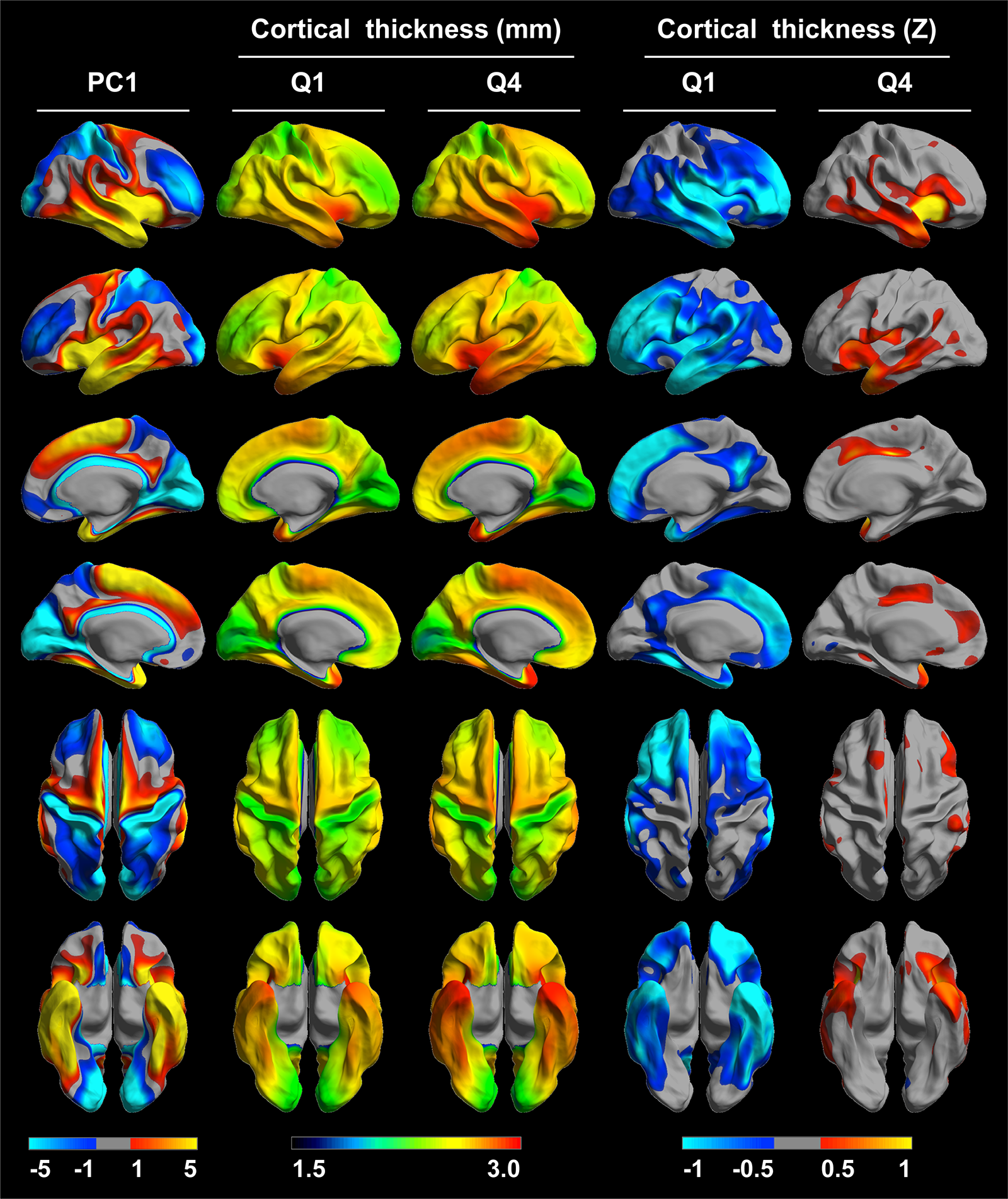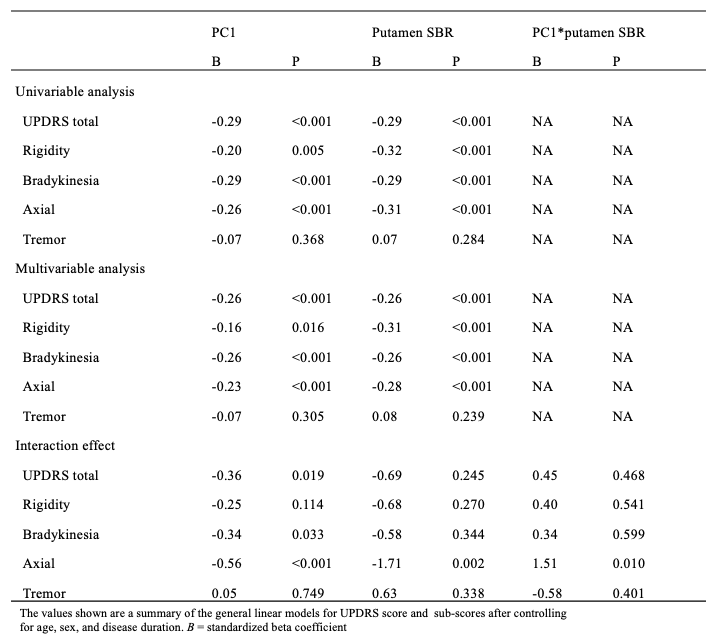Objective: In this study, we identified specific pattern of cortical atrophy in Parkinson’s disease (PD) and investigated whether PD-specific cortical atrophy contributed to motor symptom, independent of nigrostriatal dopaminergic degeneration.
Background: Motor symptom in PD is thought to be mainly attributed to nigrostriatal dopamine depletion following degeneration of the substantia nigra. However, extranigral pathologic condition in the pathophysiology of motor symptom remains to be explored.
Method: This cross-sectional study recruited 290 patients with PD who underwent dopamine transporter (DAT) PET, 3-Tesla brain MRI, and Unified Parkinson’s Disease Rating Scale (UPDRS). Principal component analysis was used to identify a characteristic pattern of changes in cortical thickness. Then, we investigated the independent and interaction effect of principal component of cortical thickness and specific binding ratio (SBR) of putamen DAT on UPDRS motor score using general linear models after controlling for age, sex and disease duration.
Results: Principal component analysis identified single main component (PC1) comprising 84.5% of total variance which encompassed bilateral medial frontal, orbitofrontal, primary motor cortex, posterior cingulate cortex, and anterior and inferior temporal cortices. Lower PC1 was associated with older age, lower cognition, and more severe motor symptom. Univariable analyses revealed that both PC1 and putamen SBR were associated with total UPDRS motor score as well as subscores excepts for tremor score, respectively. The association remained significant in multivariable analyses putting PC1 and putamen SBR together. Also, PC1 and putamen SBR showed a synergistic interaction effect on the axial motor score.
Conclusion: PD had a signature pattern of cortical atrophy which contributed to parkinsonian motor symptom, independent of nigrostriatal dopamine depletion. Especially, PD-specific cortical thinning and nigrostriatal dopaminergic dysfunction had a synergistic detrimental effect on the axial impairment. Extranigral cortical thinning should be considered to evaluate motor dysfunction in patients with PD
To cite this abstract in AMA style:
SW. Kang, HS. Yoo, CL. Lyoo. Parkinson’s disease-specific cortical atrophy as an independent contributor to motor symptom in Parkinson’s disease [abstract]. Mov Disord. 2023; 38 (suppl 1). https://www.mdsabstracts.org/abstract/parkinsons-disease-specific-cortical-atrophy-as-an-independent-contributor-to-motor-symptom-in-parkinsons-disease/. Accessed December 25, 2025.« Back to 2023 International Congress
MDS Abstracts - https://www.mdsabstracts.org/abstract/parkinsons-disease-specific-cortical-atrophy-as-an-independent-contributor-to-motor-symptom-in-parkinsons-disease/


